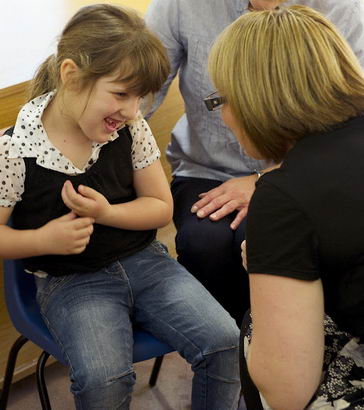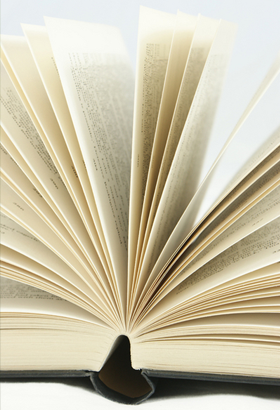
Recording and reporting on progress is vital to the success of process-based teaching and learning, and it's strongly recommended that each teaching session ends with a plenary, where the formal teaching process pauses in order to celebrate success, record specific child progress, pick up areas of concern, and inform the next lesson.
At this vital time, the whole teaching team (teachers, teaching assistants, therapists and anyone else involved directly in the lesson) reflects on what they have seen and heard, taking the lesson as a whole but, more importantly, each individual child one at a time.
The class teacher must physically record the success, maintenance or regression of each child.
For example, Child A may have tracked the teacher for five seconds or so during a sensory story and got excited as it got closer to his turn to be tickled. Can we see if next time, Child A will track for longer? At what point in the story does he start to get excited? Will he get excited earlier in the story next time? Does he show similar excitement for other parts of the story?
The child may, of course, do none of these things – such is the fractured nature of the PMLD learning process – but he may at some time in the future. We must be ready to record this when he does. This looser meaning of targets and objectives might be termed as a 'learning intention'.
We will offer the opportunity for progress in a certain way, and it's our broad intention to get there, but we must be prepared for when the child goes somewhere else entirely.
The use of video can aid recording and reporting immensely. Setting up the video on a wide-angle lens and letting it run throughout the session enables staff to pick up on all sorts of things they might have missed.
Reviewing such video evidence can provide an excellent focus for team meetings and, of course, can be legitimately used as evidence of progress for end of year reports. Looking out for differences of any form needs to become second nature for all members of the class team.
Class teams need to get used to recording as they go along and using notes ('John track five seconds', for example) can be a simple and effective system.
Progress can still be recorded against the p scales, but this might form only a fraction of the indicators of progress across a range of areas. There's increasing interest in adapting the Routes for Learning pathways so that it can demonstrate progress and it seems logical to show the maps of individual children.
The work being carried out by Claire Barnes at Willow Dene School in south London (Barnes, 2010) is a good example of this. It's still a work in progress, but there seems no reason why each child might not have his or her progress shown by a graph indicating how many of the 43 milestones have been achieved. It must be repeated that Routes does not rely on the idea of linear development, and the milestones achieved may be scattered.
Nonetheless, indicating that a child has achieved two milestones this year, for example, and 16 in total rather than the 14 achieved up to the end of the previous year, is a legitimate indicator of progress.
If we further sub-divide the milestones into those achieved occasionally, frequently and consistently (Martin, 2006), we have a potential 129 indicators of progress covering communication and cognition.

Another area where we might assess progress using numerical values is PSHE by using the p scales with its subsections:
- Attention;
- Independence and organisation;
- Interacting and working with others.
Many schools have regarded these as being pertinent to children with learning difficulties for some time and many with PMLD are able to show considerable progress over a number of years, as long as we don't regard them as being developmentally linear.
They are naturally divided into 15 subdivisions, so we have 45 subdivisions for each area and 135 in total just for PSHE.

Barnes, C. (2010) Proposal to introduce and develop AfL using Routes for Learning and video evidence for students working at P Levels 1-3 in KS1 at Willow Dene School. Unpublished Paper.
Martin, A. (2006) Assessment using the P scales: best fit - fit for the purpose? British Journal of Special Education, 33 (2), 68-75.
Routes for Learning (2006). Qualification and Curriculum Group: Welsh DfE, Cardiff